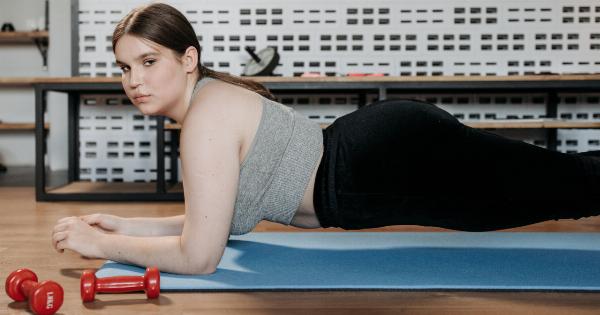When it comes to maintaining a youthful and vibrant appearance, individuals have turned to various techniques and treatments throughout history.
Among these methods, lifting has emerged as one of the most popular ways to enhance beauty and combat the effects of aging. However, while lifting can offer remarkable physical transformations, it also brings forth certain challenges and misconceptions.
In this article, we will explore the art of lifting, its benefits, and the potential pitfalls individuals may encounter along their journey.
The Basics of Lifting
Lifting, also known as facelift or rhytidectomy, refers to a surgical procedure aimed at improving visible signs of aging in the face and neck.
This transformative technique involves removing excess skin, tightening underlying tissues, and repositioning facial contours. By doing so, lifting helps individuals achieve a more youthful and rejuvenated appearance.
The Benefits of Lifting
1. Enhanced Youthfulness: As we age, our skin gradually loses elasticity and begins to sag. Lifting can effectively reverse this process by tightening the skin, reducing wrinkles, and giving individuals a refreshed and more youthful appearance.
2. Improved Facial Contours: Over time, our face may lose its natural contours due to factors such as gravity and volume loss.
By repositioning and tightening facial tissues, lifting can restore the natural balance and symmetry of the face, ensuring a more attractive profile.
3. Boost in Self-Confidence: Feeling great about one’s physical appearance can significantly impact self-confidence.
Lifting can provide individuals with a newfound sense of self-assurance, allowing them to tackle everyday challenges with renewed vigor.
4. Long-Lasting Results: While non-surgical treatments may offer temporary improvements, lifting provides long-lasting results. The effects can last for several years, making it a highly desirable option for individuals seeking a more permanent solution.
The Different Techniques of Lifting
There are various techniques used in lifting procedures, each catering to different needs and desired outcomes. Some of the most common techniques include:.
1. Traditional Facelift
The traditional facelift focuses on the lower two-thirds of the face and addresses concerns such as sagging jowls, deep nasolabial folds, and loose skin.
This technique typically involves incisions made along the hairline, around the ears, and sometimes under the chin to ensure optimal results.
2. Mid-Facelift
A mid-facelift targets the middle portion of the face, including the cheeks and nasolabial folds. This technique can help restore volume to drooping cheeks and enhance the overall harmony of facial features.
It often involves smaller incisions within the hairline or oral cavity.
3. Mini Facelift
As the name suggests, a mini facelift is a less invasive procedure that focuses on specific areas of concern, such as the lower face and jowls.
This technique requires smaller incisions and offers a quicker recovery time compared to traditional facelifts.
4. Neck Lift
A neck lift primarily addresses sagging skin and excess fat in the neck area. This technique involves incisions made around the earlobe and under the chin to remove or tighten loose skin, resulting in a more defined and youthful neck contour.
5. Composite Facelift
A composite facelift combines the benefits of traditional and mid-facelift techniques to address multiple areas of concern simultaneously.
By targeting both the lower face and mid-face, this technique can provide comprehensive results, ensuring overall facial rejuvenation.
Potential Challenges and Risks
While lifting offers remarkable benefits, it also presents certain challenges and potential risks. It is crucial for individuals considering this procedure to be aware of these factors:.
1. Surgical Risks
As with any surgery, there are inherent risks involved with lifting procedures. These risks may include infection, bleeding, scarring, and adverse reactions to anesthesia.
However, these risks can be minimized by choosing a reputable surgeon and following post-operative care instructions diligently.
2. Recovery Period
Recovering from a lifting procedure requires patience and adherence to post-operative guidelines.
Swelling, bruising, and discomfort are common during the initial stage of recovery, and it may take several weeks or even months for the final results to become apparent.
3. Realistic Expectations
It is essential for individuals to have realistic expectations before undergoing a lifting procedure. While lifting can provide significant enhancements, it cannot stop the natural aging process entirely.
It is crucial to communicate openly with the surgeon and have a clear understanding of the expected outcomes.
4. Potential for Unsatisfactory Results
In some cases, individuals may be dissatisfied with the results of their lifting procedure. Factors such as asymmetry, excessive tightening, or insufficient correction can contribute to these concerns.
Consulting with an experienced surgeon and ensuring open communication can greatly reduce the risk of unsatisfactory outcomes.
The Future of Lifting
Advancements in medical technology continue to shape the field of lifting. Non-surgical alternatives, such as laser treatments, ultrasound therapy, and dermal fillers, are gaining popularity as they offer less invasive options with reduced downtime.
These advancements provide individuals with additional choices to achieve their desired aesthetic goals.
Furthermore, lifting techniques are constantly evolving, with surgeons refining their methods to deliver increasingly natural-looking results.
In the future, we can expect further advancements in both surgical and non-surgical lifting procedures, ensuring safer and more effective options for individuals seeking to enhance their beauty.
Conclusion
Lifting offers individuals the opportunity to enhance their beauty, restore their self-confidence, and combat signs of aging.
While it may present certain challenges and risks, the potential benefits and long-lasting results make it a compelling choice for those seeking a more youthful and rejuvenated appearance. By understanding the various techniques, setting realistic expectations, and choosing a skilled surgeon, individuals can embark on their lifting journey with confidence, opening the door to a world of enhanced beauty and self-assurance.































